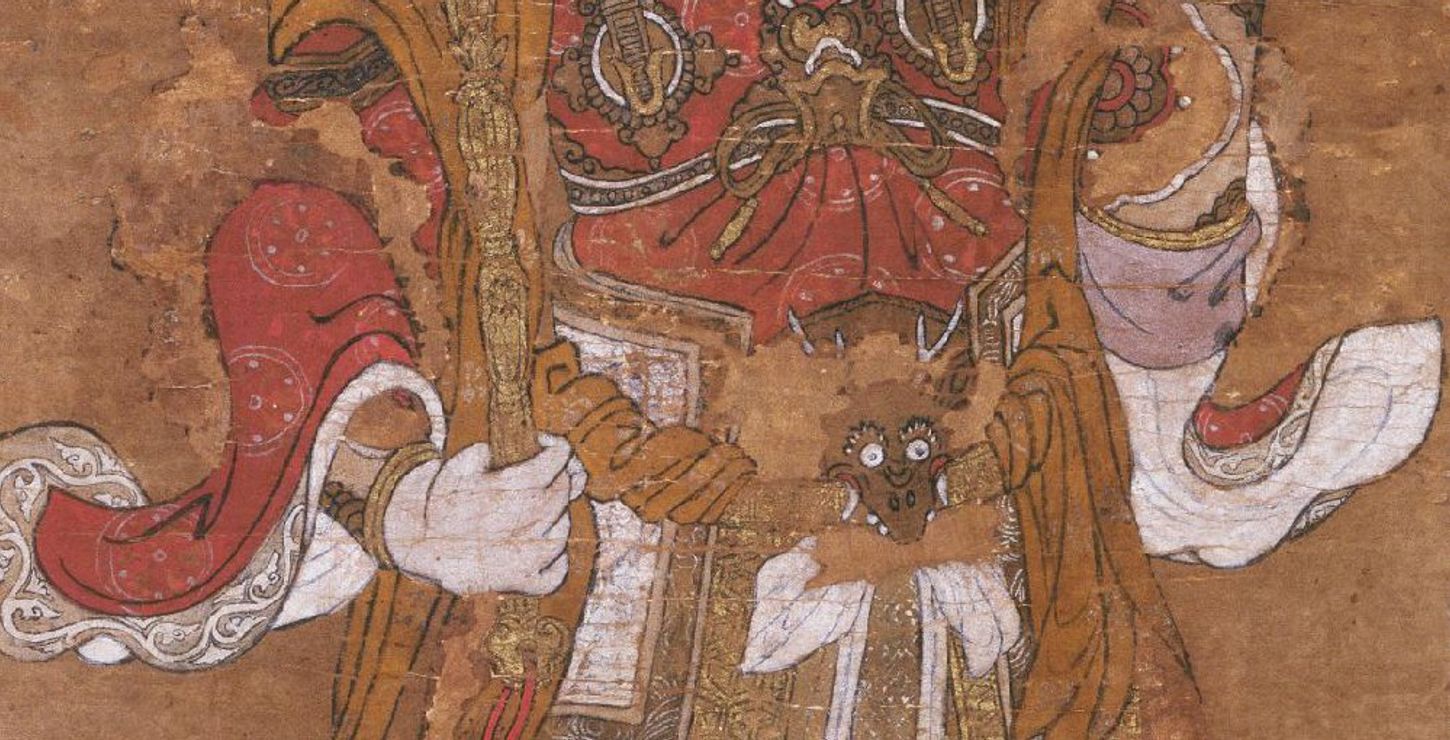Main Building
The Philadelphia Museum of Art has assembled over 80 Japanese Buddhist woodblock prints for display in Footprints of Buddha, opening August 23, the first exhibition in this country devoted exclusively to this religious art form. The selected prints, on loan from American and Japanese collections, trace the development of Buddhist art in Japan from the 12th to the 20th century. The custom of making minted religious images as an integral part of the Buddhist faith was carried from India, birthplace of the Buddha, through Central Asia to China, Korea and finally to Japan, where the religion took hold in the 6th century. In the early centuries of Buddhism in Japan, monks and devout worshipers printed multiple images of the Buddha and other deities, often storing the prints inside hollow statues in the temples. The practice of stamping religious images was in itself an act of prayer, the visual equivalent of chanting the Buddha's name in meditation. By the Muromachi period (1392 to 1568), the need for public devotional images was so great that large, hand-painted woodblock prints were increasingly displayed. The Museum has reassembled a series of such prints depicting the guardians of the compass points entitled The Twelve Heavenly Beings. These hanging scrolls, printed in the early 15th century from blocks dated 1407, are ranked among the finest accomplishments of early Japanese printmaking. The skill of the unknown artist, possibly a monk at the temple where the blocks are still preserved, is evident in the exquisite detail of the jewelry, costume, and pedestals of the gods. Each deity is represented with a flaming halo and long, loose scarves which appear to be blown in a divine breeze. No further prints can be made from these extraordinary blocks, which have been designated Important Cultural Property by the Japanese government. Among the most popular themes of the Buddhist prints through the centuries are the birth of the Buddha, the death of the Buddha, the descent of the Buddha to welcome the deceased to paradise and representations of the deity Kōshin, who protected pilgrims in their travels. As separate sects proliferated in Japan, many temples also commissioned works to celebrate their particular form of worship. On display will be several scenes from the life of Kūkai (known posthumously as Kōbō-Daishi), founder of the Shingon school of Esoteric Buddhism, and a series on Nichiren, a priest and prophet who founded his own sect. The ancient traditions of Buddhist woodblock printing continue into this century. One of Japan's leading modern artists, Munakata Shikō, turned from painting in the modern European style to woodblock printing about 1930. His Ten Great Disciples of the Buddha, 1939, one of the major achievements of his career, portray Buddha's most important followers and prophets. Two of the blocks were recarved by the artist after they were destroyed in the firebombing of Tokyo in 1945. Like many printmakers, Munakata was inspired by early carvings of Buddhist inspiration but imparts a modern, personal interpretation to the age-old themes. An accompanying catalogue by Mary W. Baskett, published by the Philadelphia Museum of Art, features reproductions of each print, including six colorplates, and text on each image. The exhibition continues through October 26.
